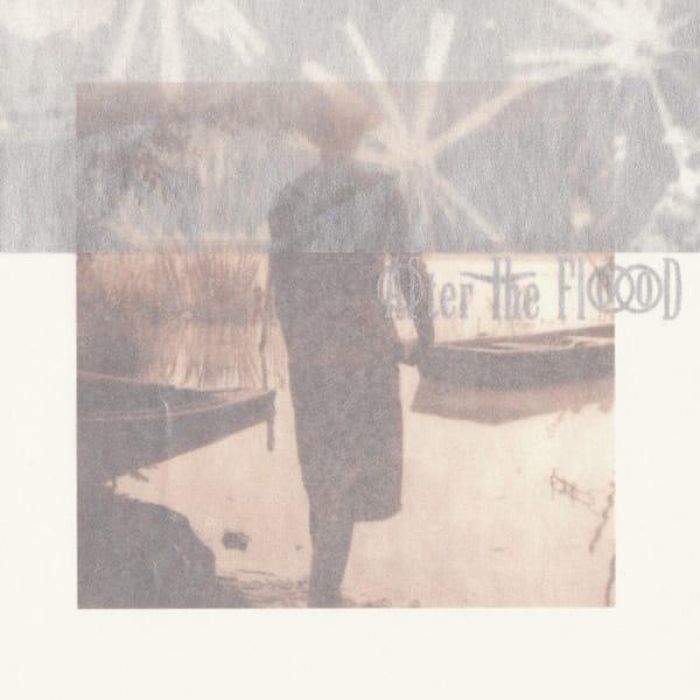After the Flood by After the Flood (Review)

I know absolutely nothing about the Aeterna label. All I know is that they put out some really good stuff. I’ve raved about Lucid — Baby Labrynthian and Idylls and the Secret Remain are two of the coolest albums I’ve ever heard, creating lo-fi minimalist ambient masterpieces. After the Flood takes the eerie otherworldliness of Lucid’s music and makes it more musical and listenable. I only say that because I find After the Flood’s music much easier to listen to, much more readily apparent. Lucid’s music is obtuse and challenging. After the Flood seems almost “radio-friendly” by comparison.
Members of Lucid do show up in After the Flood, which makes me wonder if this wasn’t some sort of collaboration.
On this album, After the Flood covers a lot of musical terrain, seemingly without any effort. “Glissando,” a duet between a guitar and an accordion, is something you’d listen while strolling through Paris, if the cafes along the Champs-Élysées were inhabited by ghosts. The same could be said for “Dispell The Nightmare,” except the location would be smoke-filled jazz clubs along the waterfront. “Terra, She Said” combines a loop of what sounds like glass bells shattering with sinister drones and factories working on overhead.
“Morning Come, Bottle Dry” is the most unsettling track on the disc. A tortured voice gasps out his last dying breaths, muttering somewhat incoherent phrases and babblings; it’s almost like an “easy-listening” version of Diamanda Galas’ Schrei X. “Come Back Smiling” could be right off of It’ll End In Tears or a Lycia album. “Spool” reminds me Gavin Bryars’ The Last Days, where sparse, apprehensive string arrangements create an air of anxiety and worry. The album ends with “Grace,” a pop song that Ivy would have been proud to write.
Like a Lucid album, the only way to do justice would be to describe each track on its own. But, like a Lucid album, there are a lot of tracks. Actually, 22 to be exact, spanning almost 70 minutes. The interesting thing is that the content of this album was recorded between 1989 and 1994. But all of the songs flow together so well, there’s an incredible coherence to it all. In other words, it’s hard to tell if the band went through phases during those five years — all of the songs have a very similar sound and quality to them all. And even with 22 tracks, there’s not really a single piece that’s terrible, or that I’d consider filler material in the extreme.
After the Flood generally takes up the mantle of This Mortal Coil, wedding melancholy ethereal pieces with an odd, avant-garde slant. However, like This Mortal Coil, it’s hard to peg down After the Flood to one musical category. At times, they’re an ambient band, other times a pop band, and sometimes a gothic band (but without all of the pretentions). I also see some comparisons with a band like Black Tape For A Blue Girl, but far less theatrical and pretentious. I only compare After the Flood with Lucid because they both share a similar musical ethic. But for a novice, I’d recommend After the Flood first.
I still don’t know anything about After the Flood, Lucid, or even the label they’re on. But that only adds to the mystery. However, perhaps it’s this mystery that makes me love their music so much.